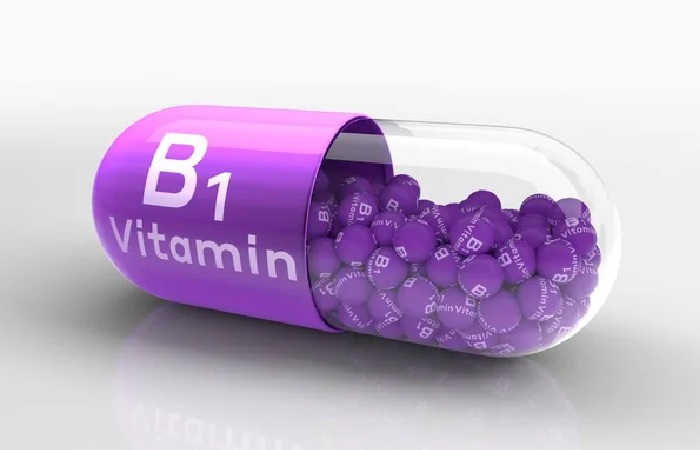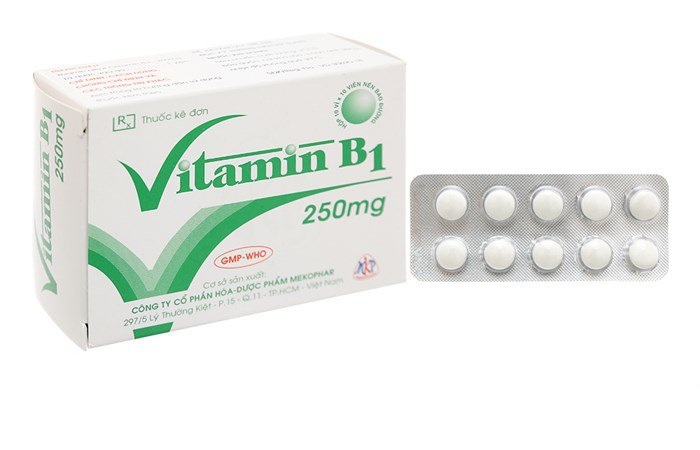Table of Contents
Vitamin B1
Vitamin B1, or thiamin, is an essential micronutrient the body requires to carry out vital functions correctly. It is a water-soluble vitamin (water-soluble). This implies that it is absorbed quickly. However. It is also eliminated through the urine in a short time. Hence the importance of ingesting it daily in sufficient quantities. You should know that our body does not produce it. Therefore. We can quickly obtain it through a varied and balanced diet since thiamine is present in many foods of plant and animal sources.
What are the Foods Rich in Vitamin B1

Fortunately. Many foods can provide the necessary dose of thiamine to avoid its deficiency: cereals, especially whole grains, meats, nuts, vegetables, seeds, etc. In addition, the different food groups offer this nutrient in their composition. Therefore, you must eat a healthy and varied diet so that thiamin is present. Among the foods that provide the most vitamin B1, the following stand out:
Pork meat. Pork meat is one of the leading natural sources of thiamine, which is concentrated, above all. In thin pieces containing less fat, which can provide up to 0.89 mg/100 grams.
Eggs. The chicken egg is considered a superfood because it contains countless essential micronutrients, including vitamin B1, especially in its yolk, ranging between 0.1 and 0.2 mg/100 grams.
Sausages. Sausages prove that there are no “good” or “bad” foods. In moderation, they can ideally be part of a balanced diet, as some are rich in this essential vitamin. The ones that contain the most are sausage loin (0.8 mg.), Serrano ham (0.75 mg.), mortadella (0.33 mg.), and bacon (0.43 mg.).
Whole grains. Whole grains are one of the food groups richest in vitamin B1. Heading the list, we have wheat germ with 2 mg/100 grams and, following, we find whole oats (0.76 mg.), brown rice (0.39 mg.), whole wheat, and corn (0 .40mg). Of course, products derived from whole grains, such as bread or pasta, are also a source of thiamin.
Nuts and seeds. In general, nuts are small “capsules” with a host of vitamins, minerals, and essential fatty acids. Therefore, they are an excellent complement to any diet in moderate amounts. Regarding the content of vitamin B1, the richest are pistachios with 0.69 mg/100 grams and hazelnuts with 0.45mg. Regarding seeds, we must highlight those of flax and sunflower seeds, with 1.7 mg/100 grams.
Legumes. An essential source of fiber, legumes also provide thiamine. Broad beans with 0.50 mg./100 grams and lentils with 0.62 mg. However, white beans are also a good source. Here you can read about How many legumes to eat a week.
Vegetables and vegetables. Garlic (0.16 mg.100/grams), cauliflower, asparagus, artichokes, or mushrooms (0.12 mg) stand out among the vegetables that provide the most vitamin B1 to the body.
Fish and shellfish. Food from the sea contains reasonable amounts of thiamin and essential fatty acids such as omega 3 and 6. Oysters with 0.15 mg/100 grams and fish such as sardines, sole, or sea bass with amounts around 0.12 mg are foods that cannot be missing from a balanced diet.
Functions of Vitamin B1

As you can see. There are many essential foods to obtain vitamin B1, even if you follow a vegetarian diet. Are you wondering what vitamin B1 is for? Including them in the diet is vital since thiamine fulfills essential functions in the body, especially concerning the metabolic process. These are the most important functions of vitamin B1:
It is essential to transform carbohydrates into the energy we need daily, both to carry out our vital functions and daily activities.
Thiamine is responsible for breaking down sugars so that vital energy reaches our organs (including the heart and brain), muscles, and nervous system.
The correct absorption of the different nutrients depends. To a large extent, on maintaining adequate levels of thiamine in the body. Therefore, it is essential for the development and growth of human beings.
The correct conduction of the nerve impulse, the contraction of the muscles, which make it possible from the heartbeat to the movement, depends mainly on the presence of thiamine in adequate amounts.
What can Cause a Lack of Vitamin B1?.

The daily amount of vitamin B1 necessary for good health varies depending on age, sex, and special conditions, such as pregnancy. However, in general, it should not be less than 1 mg/day in adults. The lack of vitamin B1 can cause the following pathologies :
Insufficient amounts of thiamine can manifest themselves in the form of abnormal tiredness.
Concentration problems or muscle weakness.
Weight Loss and Symptoms of Malnutrition Vitamin B1

Cases of severe deficiency can trigger a disease called beriberi, which affects the proper functioning of the heart and the nervous system. The lack of sufficient thiamine can cause Wernicke-Korsakoff syndrome. A complex pathological process that involves encephalopathy and brain damage, especially in the thalamus and hypothalamus. If you also want to know about other vital vitamins for the body, do not miss this article on Foods with vitamin B3.
Conclusion
Vitamin B1, or thiamin, is a water-soluble vitamin (i.e., soluble in water), which was discovered towards the end of the 19th century following work on beriberi, a severe and widespread disease in the Far East. At that time, it was found that this disease was due to the absence of a substance in the primary diet of this region, composed of most husked rice vitamin B1 being contained in the grain husk.
Related posts
Featured Posts
Exercises to Have the Best Six-Pack in Summer
Introduction Marking the abdomen area is the goal of true fitness lovers. And, is that this summer you can teach…
French Pedicure – How to Get French Pedicure Nails?
French Pedicure French Pedicure – Thanks to the latest beauty services, a modern woman can afford a classically monochromatic color…


